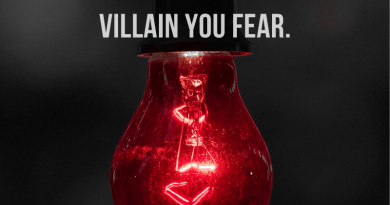How to Fight Your Irrational Fears And Stay Strong
She could hear her beautiful baby crying but was frozen in the doorway unable to move. The crying got worse and she knew that unless she comforted the infant soon the baby would be inconsolable, and yet her feet wouldn’t move. She didn’t look at the cot but the floor in front, where the venomous hairy monster sat before her…. .okay it was a UK spider so not likely to kill her at all, and yet still her body was frozen as the tears fell down her face. “What a useless mother you are” she berated herself.
That awful mother was me 14 years ago. My fear of spiders had not been controlled for years and I was at the stage where I wouldn’t open a newspaper until my husband had read it and removed the images of spiders. I hated houses that had wooden floors or skirting boards because every knot in the wood could be a spider about to crawl across me.
At the height of my fear, I tried to get out of a moving car. Clearly this harmless 8-legged creature had massive levels of power over me but now that fear is gone, I’m never going to love spiders but I’m not going to leave the room because of one and I can read the word without freaking out and sobbing.
If you think that fear is irrational, what about the fear of going to airports? Or the fear of not asking for help?
Today I want to look at how our irrational fears impact us, how they can destroy (and I don’t use that word lightly) our success. They can damage our health and even stop us from living our lives. And then I’ll share the benefits of fighting that fear and most importantly how you can fight your fears too.
Table of Contents
- How Irrational Fears Impact Your Life
- Why Bother to Fight the Fear
- How to Fight Your Irrational Fears
- Why Did This Happen?
- The Tool Kit
- Final Thoughts
- More About Fighting Fears
How Irrational Fears Impact Your Life
The thing about irrational fears is that we are not keen to look at them. It makes us feel inadequate, weak and daft because we can’t do things that it seems everyone else can. That gives the fear of power.
Fear loves negative emotions and saps up yours making your fear bigger and uglier and even more powerful. Not ideal to say the least. Fears can cause us to:
- Avoid situations where that fear may have to be faced. Dodging parties, new jobs, new experiences where we aren’t sure we will be able to protect ourselves.
- Stop us from sleeping for fear the thing we fear will “get us in the night.” For me this was massive, and I stopped sleeping which had massive implications when my job was to look after a toddler and a baby. I felt half-dead most of the time!
- Feel ill with the stress. Stress can be the cause of wrong decisions. Drinking alcohol when we shouldn’t, eating chocolate because it makes us feel better, the list of excuses is long that we hold on to so that we can avoid the cause of our stress.
- Cause more distress as our minds overload us with negative thoughts of inadequacy. This can damage our confidence. Having coached thousands, I know that a lack of confidence is usually the underlying impactor on most people’s success across all areas of their lives.
- Risk looking aloof or arrogant because we won’t participate like other people. Our fears can even isolate us in our personal and professional lives too.
- Feel debilitated. Needless to say, these fears may look irrational and shouldn’t exist to the outside world but to the sufferer they are debilitating. Even impacting on their earning potential, love life, hobbies, travels, and personal and professional success.
Why Bother to Fight the Fear
Couldn’t you just ensure you live your life in the way that you don’t have to deal with your fear?
I had a client that was so scared of flying that they couldn’t even take their partner to the airport, another who had avoided public speaking for over 20 years and yet now at the height of their profession they had no choice, what were they going to do? Quit? There was another who could never ask for help and another who feared people finding out who they really were.
All these fears and many more can be fixed but only if we can appreciate the benefits of fighting the fear.
Let’s look at the benefits of fighting your fears:
If you’re going to change the way you do something, something that has impacted your life, thoughts, and actions for years, it can be hard to believe change is possible.
The first thing you must do is give yourself a big enough reason why. Go back through your life and remember all the occasions that this fear was there.
I can still see the spider trapped in my hair because it had obviously been on my hairdryer. I also remember that I probably looked ludicrous in the South of France in my underwear running down the lane screaming and flinging my hair everywhere. The poor spider had not only been flung a long way from my head but was probably destroyed in the flight.
Remember the feelings, the actions, the negative feelings you felt afterward, for me it meant that every time I picked up a hairdryer I could see a spider crawling towards my ear in my hair. Guess how helpful that was for reinforcing my reactions and irrational fear?
I really experience fear. Make it so painful that you probably notice your heart racing, your shoulders drawing up and your breath changing. That fear is causing a physical change in your body, doesn’t feel good, does it?
When the irrational fear is challenged and destroyed, it can’t have power over you. So new opportunities can come your way and instead of fearing them and what people will think of you for your choices, you can be open to;
- New hobbies
- New travels
- New opportunities
- More success
- Financially more secure
- Happier
- Healthier
- Confident
The list is long so what can you do to get rid of your fears?
How to Fight Your Irrational Fears
In my book Fight the Fear: How to Beat Your Negative Mindset and Win in Life, I cover 12 of the biggest fears that I see the impact on success and happiness. Not all of these are obvious but they all have far-reaching impacts on our lives.
Here are some of those ideas to help you fight your fear and get more of what you want out of life:
Why Did This Happen?
For some people, they really need to know why the fear started, for others all they want is to get rid of it. If you need to understand yours then don’t skip this tip. Learn how your fears are made and appreciate where yours came from. If you don’t care how it arrived, you can jump to top tip 2.
I’ve seen some clients who are not prepared to look at how to get rid of the fear until they’ve understood how it got here in the first place. It’s not my place to tell them that is right or wrong, just to help them find the right steps to lead them to a happy path.
When a fear first starts, we don’t acknowledge a fear has entered our lives. It is only after a few occasions that we begin to notice that there’s a strong negative emotion connected to this “thing”. That’s how fear is allowed to grow because as humans we have in-built responses that have kept us safe for our entire existence. This means we are meant to perceive the fear and either run or fight, either way, our bodies jump into action creating physical responses to the perceived threat.
Look for when you first noticed the fast heartbeat, the shallow breathing, the shaking hands, the redness. You have created an automatic way of dealing with this fear. It could be that it felt sensible to fear this because you had an unhappy outcome, although it is usually the case that your head has the facts and your heart is not prepared to hear them as it creates a version of the event that is far scarier than it actually was.
Learning how to remove the emotions and feelings will help you to change your body’s response. The first time I fixed someone’s fear of public speaking, they told me that it physically closed their throat, I worried that was it possible with words to change our physicality? The answer was yes! With the tools and techniques, I share it below.
The Tool Kit
From the many people that have contacted me after reading Fight the Fear to my clients, I know for even myself creating a tool kit is a must. This is not a bag that you physically must haul everywhere. This is about learning tools that really resonate with you so that when you can feel the fear start to impact on you, you’ve got your kit ready to take it on.
I don’t have space in one article to share all of those tools so let’s visit a few:
1. Why I’m Awesome?
Creating a 2-page handwritten document of why you are awesome can help. This document will be packed with achievements, successes, overcoming adversity and all of those will be full of positive emotions, actions, and feelings. It is not easy to write, and I get many messages telling me so however, it is a powerful reminder that you can stand up and accomplish.
2. Draw out Your Emotions
Earlier we looked at how irrational fears can damage every aspect of our lives. If you were to follow the negative spiral down you can follow the positive spiral up again.
I draw these individually for clients and with each action, thought or feeling we put an arrow between them. Each arrow is an opportunity to do something different. If we know that irrational fear is an automatic thought process, then we can start to see that we need to think, do or feel something different. Top tip 3 will help with that.
3. Acknowledge That You Need to Change
It’s not easy to change, and that is a belief that many holds. Top tip 4 could assist further, however for this tip, remember that when you want to do, think or feel differently, you’ve already achieved the first step and that is recognizing something must change (you don’t need to know what). But if you aren’t sure yet if there’s really something different you want to do, this story about Nancy may help you to figure it out.
Then it’s about acknowledging it. That means not only accepting it but feeling that it is yours to take on and change.
Then for 2 weeks, decide that you won’t allow the thought to be in your head. There are usually some negative thoughts allowed to fester in your head. At this stage, just say “No I’d like you to stop.” After 2 weeks choose a new thought that you would prefer to hear in your head, maybe “I can cope with situations that scare me” or “I am stronger than I know”.
There will be times when you fail. Don’t berate yourself because that is another negative thought you are allowing your head to process. Just start again and at times like that have a read of your “Why I’m awesome list”.
4. Choose Your Words Carefully
I’ve heard many clients tell me that “It’s going to be hard to change” “I can’t remember a time in my life where I wasn’t petrified” or “This is a lot to ask”. Any thought that gives power to your fear takes away power from you to fight it. Therefore, choose how you word your goal to overcome your fear carefully.
Think thoughts like “I remember when I achieved XXXX and that reminds me I’m far tougher and more capable than I give myself credit for”. (Take the xxx from your why I’m awesome document.)
5. Believe That You Have the Control Power
The only person that can control what we think and feel is us. I know it can feel like other people are impacting on us, however, they can only do that if we give them permission to do so.
If you really think about that for a moment, can you see that you have the right to think and feel anything you want right now? I’m certain you wouldn’t choose pain, fear or anxiety. So, what would you choose to think about your fear?
6. Put up Physical Reminders
Working one to one, I can find the fear, work through it and create a tool kit of thoughts, feelings, and actions that will help them fight that fear and get rid of it. For some, they don’t need physical things to help them; others do.
For example, the CEO who was petrified of public speaking but could handle a conference call with 300 without a second thought, imagined the microphone was a phone when they spoke in front of 400 people to help reinforce the positive thoughts and ideas we’d created.
Or the client that always worried that they were an imposter and “someone else can do this better” pinned on their office wall a tag cloud of all the words that made up their “Why I’m awesome document”.
So they had a daily reminder. They were the right ones for the job and they could do it. These daily reminders all come down to one key point — help you to Hack the Habit Loop.
What would be your visual clues to remind you that you can overcome this?
7. Physical Supports
Music, environment and even smells can impact on us. Know the music that makes you feel alive and ready for anything. Try aromatherapy oils to feel positive and energized. Even choose your work environment or clothing to empower you.
Changing these things is physical and giving yourself physical ideas to action can help power up your emotional state too.
8. Don’t Go It Alone
The fear to ask for help is very real (and has a whole chapter in my book) so I know people really struggle with this. The fact is we all need people. We are not insular by design and as such, it can be tough to admit that you have a fear impacting you.
However, by sharing your fear with a trusted friend, colleague or loved one can mean that when you are feeling the fear. you can talk to someone. It could be that you share with them the contents of your tool kit and ask their permission to be added to it. That way they know what works for you and how to best support you.
It’s not a sign of weakness to tell people about your fear. It takes massive levels of strength to say, “I have this fear, and I want to get rid of it.”
9. Get Physical
One of the reasons that a fear can escalate is because we have come to accept that response. Our body reacted in a certain way, once repeated the behavior and it became a formed habit that was accepted.
Challenging a fear can be done using our body too when we appreciate that fear is actually a reaction inside our bodies. We don’t need to understand where in our brains or what chemicals are racing through us to use our physicality to help us challenge our fears.
When I was writing my book, the Cuddy Superhero pose[1] was proved and disproved by various researchers around the world 3 times. Whether it’s real or not, the fact is the way we stand, the way we breathe and even the speed at which we speak can impact us as well as those around us.
If you have a fear of public speaking or a fear of people thinking you are stupid or a fear of what people are thinking you can look at how you speak, stand and move. If you compare these with people you deem confident and happy in these situations, how do you look? What can you learn?
The research around placebo’s reinforces us that if it feels like it is working, then keep doing it! What could you use to help reinforce your power and fearlessness?
Final Thoughts
A little fear can be good. As someone famous once says:
“It is not fear, it is performance energy.”
Despite having an absolute hatred of public speaking 10 years ago, I now love an audience and yet I have a healthy level of fear. That level of fear says “Are you well prepared?” “Do you know your audience?” “Have you rested your voice?” “You really want to deliver to this audience what they need” And those thoughts are sensible.
And just remember, it’s never ever too late to face your fear and do what you desire most! It’s even possible to start over your life no matter what stage of life you’re at. Here’s the proof: How to Start Over and Reboot Your Life When It Seems Too Late
So as you reduce your fear, be aware of a good level of fear.
Source:https://www.lifehack.org/747348/how-to-overcome-your-irrational-fears-that-stop-you-from-succeeding




